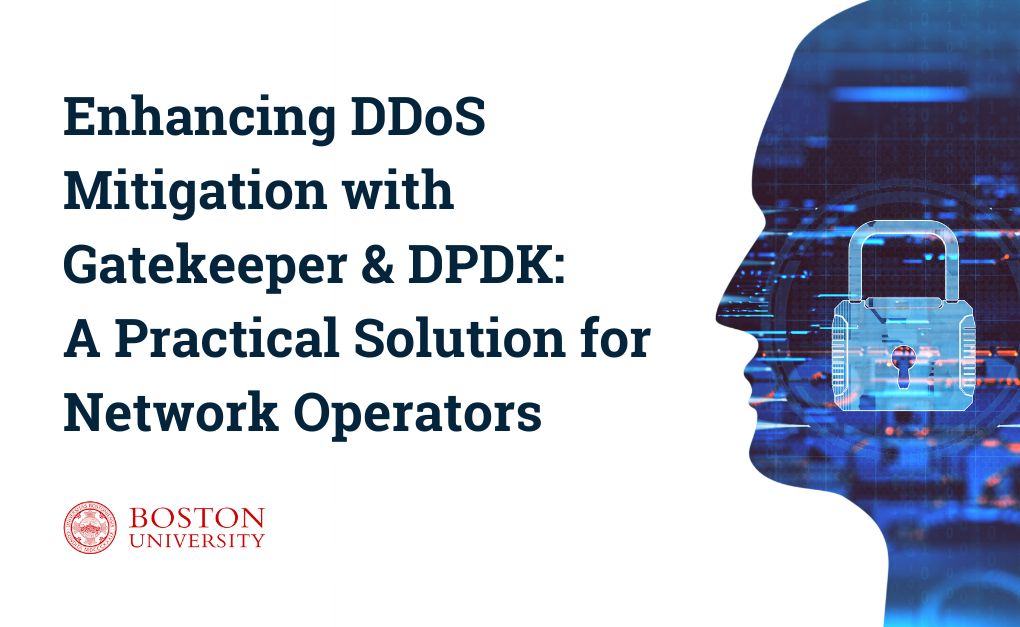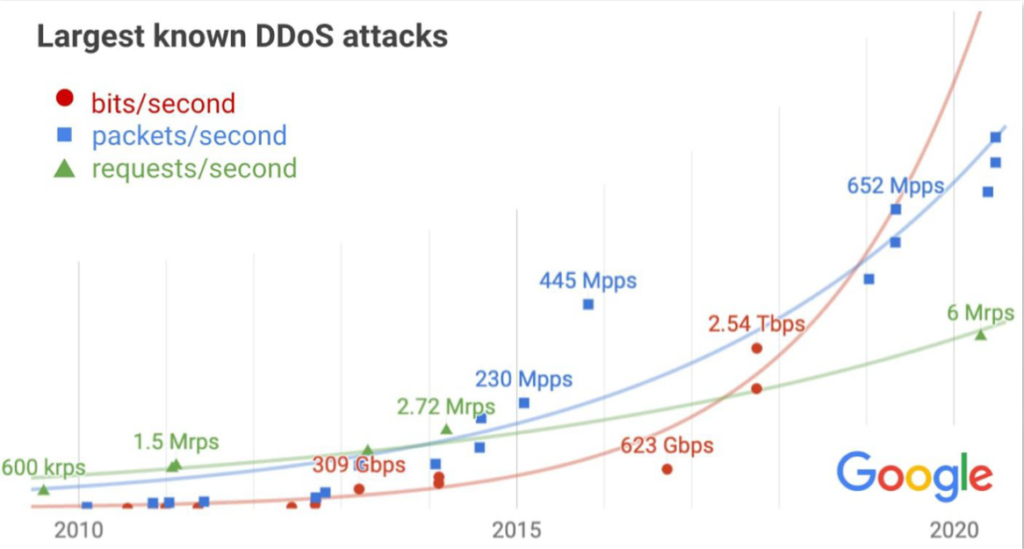
Author: Michel Machado – michel@digirati.com.br
Overview
Originally developed at Boston University, Gatekeeper is the brainchild of researchers who looked at the state of distributed denial-of-service (DDoS) attacks and realized that the community lacked an affordable, performant, and deployable solution to defending against such attacks. On one hand, cloud companies offer DDoS protection as a service, but this can be costly. On the other hand, many research proposals have been developed to allow Internet operators to protect their own networks, but none of these ideas have yielded production-quality software systems. Gatekeeper puts theory into practice by providing network operators with an instantly deployable and affordable solution for defending against DDoS attacks, and does so without sacrificing performance by leveraging DPDK as a key enabling technology.
The Challenge
Part of the challenge in defending against DDoS attacks is differentiating good traffic from bad traffic in seconds. To do so most effectively requires capturing the qualities of individual flows as they pass through the DDoS mitigation system — this allows the system to rate limit flows, apply policies based on the traffic features, and punish flows that misbehave by blocking them completely. Capturing these qualities for each packet that passes through the system requires an extreme amount of CPU and memory resources, especially during attacks that nowadays stretch beyond 1 Tbps. To withstand attacks of this magnitude, DDoS mitigation systems either need to be widely deployed in parallel (which is expensive), or need to be especially careful in how they process packets. The latter is where Gatekeeper utilizes DPDK to be able to work efficiently and affordably.

The Solution
To be able to process packets at this scale, kernel bypass is absolutely necessary. We chose DPDK as a kernel bypass solution because of its stability and support from industry, as well as the feature set that it supports. In fact, the feature set of DPDK is so rich that it significantly reduced our time to market since we did not have to write everything from scratch.
Gatekeeper heavily relies on three key features in DPDK: (1) NUMA-aware memory management, (2) burst packet I/O, and (3) eBPF. These features allow Gatekeeper to enforce policies as programs instead of firewall rules, and to do so efficiently. This gives operators a lot of flexibility in determining how flows are processed by Gatekeeper without having to sacrifice performance.
On occasion, we found some shortcomings in DPDK libraries. For example, the LPM6/FIB6/RIB6 libraries that perform longest prefix matching on IPv6 were not a good fit, and we had to implement our own. But for each issue we have come across, we’ve found huge success with other libraries as described below. Furthermore, the community is hard at work to address production demands such as dynamically setting memory zones (see rte_memzone_max_set() for details), which previously required patching DPDK to change.
The Results
With DPDK, Gatekeeper achieves the following benefits:
- NUMA-aware memory management allows Gatekeeper to reduce memory access latency by enabling CPU cores to access local memory instead of remote memory.
- Burst packet I/O reduces the per-packet cost of accessing and updating queues, enabling Gatekeeper to keep up with volumetric attacks.
- eBPF (integrated in DPDK) enables deployers to write policies that are impossible to express in other solutions such as requiring TCP friendliness, bandwidth per flow, and quotas for auxiliary packets (e.g. ICMP, TCP SYN, fragments) per flow. Thanks to the guarantee of termination of eBPF programs, Gatekeeper can gracefully continue processing packets even when an eBPF program is buggy.
Many other DPDK features, including prefetching, the kernel-NIC interface, and packet filters play key supporting roles. With DPDK’s help, a modest Gatekeeper server can track 2 billion flows while processing at the very least 10 Mpps through eBPF program policies to decide how to allow, rate limit, or drop traffic.
Gatekeeper puts DDoS defense back on the hands of network operators, administrators and the general Open Source community. What was until recently only available via opaque and expensive third-party services can now be deployed by anyone with the appropriate infrastructure, with levels of flexibility and control that simply did not formerly exist. Andre Nathan – Digirati
The Benefits
DDoS attacks cause great financial, political, and social damage, and are only increasing in magnitude, complexity, and frequency. With Gatekeeper, network operators have a production-quality, open source choice in the market to defend their infrastructure and services. With the aid of technologies like DPDK, Gatekeeper is able to flexibly and efficiently defend against attacks, lowering the cost of deployment and enabling many stakeholders to protect themselves. To date, Gatekeeper has been deployed by Internet service providers, data centers, and gaming companies, and hopes to reach new deployers to eventually eradicate DDoS attacks.
Check out their GitHub here
White paper link
Have a user story of your own that you would like to share across the DPDK and Linux foundation communities? Submit one here.


